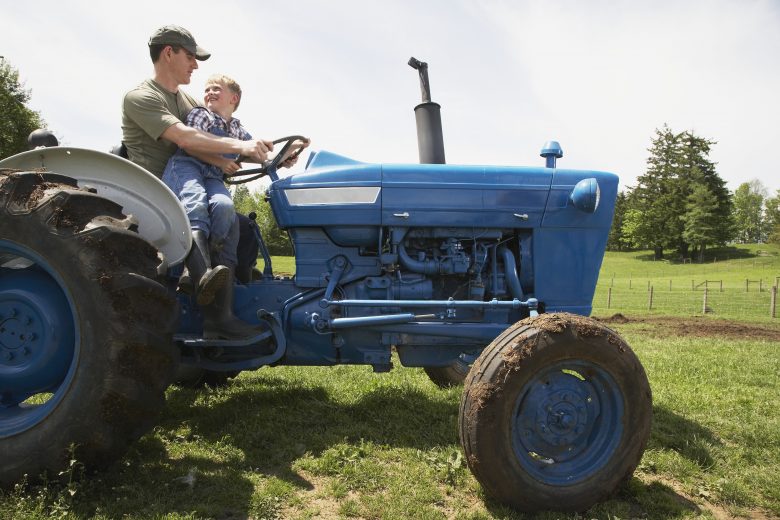Farming is one of the most dangerous jobs in North America. And because farms are often family-owned, the risks not only affect employees but whole families, from children to seniors. Farm operators have to bear in mind both the safety of their workers and their family members who are exposed to numerous hazards from heavy equipment and livestock to pesticides and dangerous chemicals.
Among the many risk factors related to farming, tractor rollovers/overturns are one of the leading causes of occupational death in the agricultural industry. This serious problem has a very simple solution: roll-over protection structures (ROPS), which are between 99% and 100% effective in protecting the person operating the tractor. Such high numbers are rarely achieved, or even possible, with a straightforward engineering solution to a major cause of death and injury in any industry. ROPS doesn’t even have to be a complex structure or cage, as despite its simplicity a rollbar is enough to maintain a space for the driver’s body in the event of a rollover.
All new tractors are required to come with an inbuilt ROPS. Unfortunately, ROPS is not a legal requirement on older tractors or on family-operated ones, and in 2012 only 59% of farm tractors in the US were equipped with it. The National Institute for Occupational Safety and Health (NIOSH) has estimated that fatality rates related to rollovers could be reduced by a minimum of 71% if all tractors were equipped with ROPS.
What’s preventing a wider use of ROPS?
Old agricultural machinery is extremely well-made and durable and, in case of a fault, repairs can be made with little trouble. This means that the old tractors are not easily phased out by newer models. The robustness of old tractors is one of the reasons why ROPS use isn’t increasing by much.
Another reason is the price, which might be discouraging for some farmers. Only some states in the US offer rebate programs to help farmers retrofit older tractors, and many small agricultural businesses create their own DIY ROPS, which is not always a good idea because even if you build a very strong structure, it requires some flexibility to absorb the shock. Although it might be cheaper and easier for a farmer to construct a strong frame, it could break if it’s too rigid.
The good news is that there are cost-effective ROPS (CROPS) designs available, like the ones from NIOSH, which can be assembled from simple cut-and-drill parts for less than $425 and only one part needs to be welded by a certified professional welder. This will still be seen as a considerable expense to some, but it’s a safer bet than a DIY solution.
The system’s perceived lack of growth could also be caused by the fact that, even with possible rebates and potential lives saved, some farmers still choose not to install ROPS. Some wouldn’t accept it even if it was free, which likely has a lot to do with their attitude towards safety. When people around hazards for a long time and nothing bad has happened then complacency sets in, and farm operators don’t believe they’re going to get hurt so they perceive suggestions of ROPS installation from the government as invasive and the proposed safety measures as unnecessary.
A recent ROPS social media marketing campaign in New York State addressed this “it can’t happen to me” attitude. It produced a poster with two photos. One showed an image of a father that said: “Of course, you’ll never get hurt”, and one of his teenage children that read: “But what about them?” As a result of this and other posters and surveys, the campaign led to an increase in ROPS sales in New York. This angle might be the best option of spreading awareness because people tend to care more about the safety of others—be it coworkers or family members—than their own.
But there also has to be an awareness of how rollovers and other incidents occur in agriculture. It usually begins with the complacency mentioned above but other states can also be a factor leading to inattention, errors or operating the tractors with a higher but unrecognized level of risk. With a better understanding of how easy and common it is for even an experienced operator to make a mistake that could cause a rollover, even complacent farm operators might be more likely to add that extra level of protection against the unexpected—instead of waiting until it’s too late.

